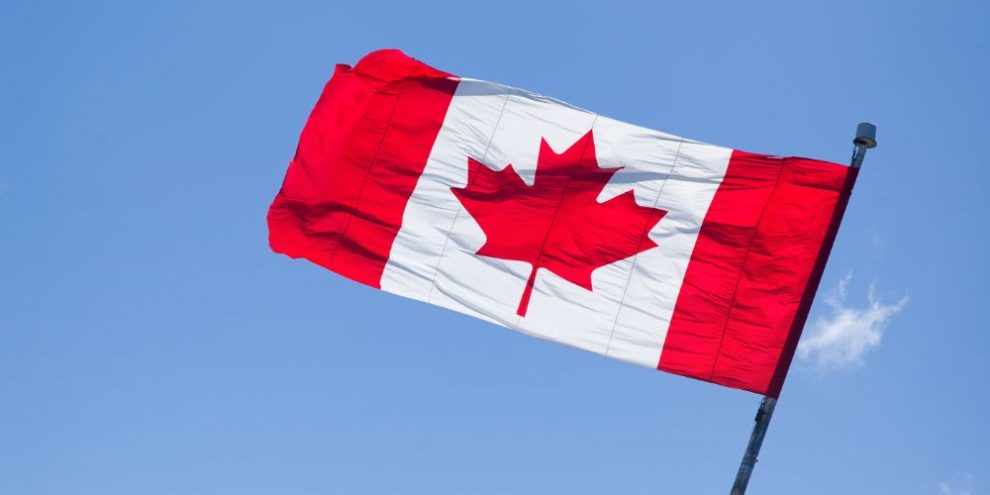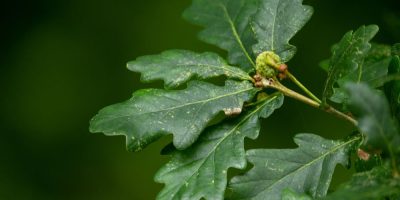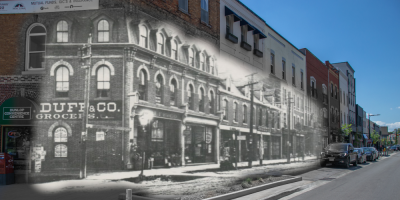
This Barrie 360 article is brought to you by Suzuki Canada.
You might think you know Canada. It's got poutine, hockey, and some seriously stunning landscapes. But the Great White North has a treasure trove of surprising facts and hidden gems waiting to be uncovered.
From quirky customs and wonderful inventions to mind-blowing geographical wonders, this list will take you on a journey across Canada.
So, grab a cold one and get ready to discover 25 amazing things you didn't know about Canada!
1. A Canadian invented peanut butter
Canada can lay claim to an early version of peanut butter!
In 1884, a Canadian chemist named Marcellus Gilmore Edson received a patent for a process to create "peanut paste." This paste, made by grinding roasted peanuts between hot surfaces, was intended for use in candies. While Edson's invention wasn't quite the spread we know today, it paved the way for what would become a popular food product.
2. Canada fought a war with whiskey
Canada once went to war with Denmark over the ownership of a 1.3 km2 uninhabited island called Hans Island. Lasting from the 1970s to 2022, it was a bloodless war fought with flags and booze.
Canadian soldiers and scientists visiting the island would leave a bottle of Canadian whiskey, while the Danes countered with schnapps. This playful battle ended peacefully in 2022 with the island being divided between the two countries, creating a new land border and the longest maritime boundary in the world.
3. Canada has a strategic maple syrup reserve
Canada is the world's largest producer of maple syrup, accounting for over 70% of the global supply. But maple syrup supply is highly dependent on weather.
That’s why, in 2000, the Federation of Quebec Maple Syrup Producers started the Global Strategic Maple Syrup Reserve. The goal was to help stabilize the maple syrup supply.
The reserve can hold up to 133 million lbs of syrup. However, in 2023, the supply hit a 16-year low with only 6.9 lbs in storage.
BONUS FACT: In 2012, over 18 tons of maple syrup, valued at around $18.7 million, were stolen from a Quebec reserve. The syrup was eventually recovered, but the mastermind behind the heist remains unknown.
4. Canada has a rich history of dinosaurs
While no dinosaur fossils have been found walking the streets of Toronto lately, Canada is full of dinosaur fossils and bones! In fact, over 100 species have been unearthed across the country, with Alberta leading the pack with almost half the discoveries.
The abundance of rivers played a crucial role in fossilization, as these muddy currents quickly buried the remains of these prehistoric creatures after they died. Today, paleontologists continue to uncover these fascinating remnants, giving us a glimpse into Canada's prehistoric past.
5. Hairless cats started in Ontario
Believe it or not, the Sphynx cat, known for its hairless appearance and loving personality, has Canadian roots!
The story begins in Toronto in 1966 with a domestic shorthair cat giving birth to a hairless kitten named Prune. This unique mutation sparked the development of the Sphynx breed.
While Prune's line eventually died out, breeders continued working with other hairless cats found in Toronto, alongside those discovered in Minnesota. Through selective breeding, the Sphynx we know today emerged, a testament to Canada's role in the feline fancy world.
6. The inspiration behind Winnie the Pooh started in Winnipeg
The beloved Winnie-the-Pooh wasn't entirely born from imagination … his name and playful spirit were inspired by a real Canadian bear.
A veterinarian named Harry Colebourn adopted a black bear cub named Winnie in White River, Ontario during World War I. Unable to bring her overseas, he left Winnie at the London Zoo after the war.
There, she became a local celebrity, attracting many visitors, including a young Christopher Robin Milne. Christopher Robin's love for Winnie, combined with his own teddy bear named Edward, led to the creation of the iconic Winnie-the-Pooh – a silly, honey-loving bear with a heart as big as the Canadian wilderness.
7. Quebec City is the only fortified city in Canada (And the US)
Encircled by fortified walls, Quebec City is the only remaining walled city north of Mexico. This impressive defense system, along with the charming architecture within, earned Quebec City UNESCO World Heritage status in 1985.
Walking along the ramparts, visitors can step back in time and imagine the city's strategic importance in centuries past. Today, these fortifications, along with the cobbled streets and historic buildings of Old Quebec, offer a captivating glimpse into North America's colonial past.
8. A Canadian invented the paint roller
Canada can proudly claim the invention of the paint roller, a tool that revolutionized home improvement projects.
In the 1940s, a Toronto resident named Norman Breakey dreamt of a faster and more efficient way to paint. Up until then, paint brushes were the only option, making large-scale painting a laborious and time-consuming task. Breakey's ingenuity led him to develop a simple yet effective design: a cylinder of absorbent material mounted on a handle.
While Breakey sold his invention under names like "Koton Kotor" and even saw it stocked by Eaton's department store, he never secured a patent, which opened the door for others to capitalize on his idea.
9. A Canadian helped develop wireless radio
While Guglielmo Marconi is often credited with inventing radio, Canada's Reginald Fessenden played a crucial role in its development.
Fessenden, a brilliant inventor, disagreed with Marconi's reliance on spark-gap technology, believing it limited radio's potential. He pioneered the use of continuous waves, enabling clearer transmission and paving the way for voice transmission.
In 1900, Fessenden achieved a historic feat – transmitting the first wireless voice message over a distance of about a mile. Even more impressive, in 1906, he conducted the world's first true radio broadcast, sending a mix of voice and music across a significant distance.
10. The Robertson screwdriver is Canadian
The familiar square-socket screwdriver we know today owes its existence to Canadian inventor P.L. Robertson.
While working as a salesman, Robertson grew frustrated with traditional screwdrivers that slipped easily from slotted screws, sometimes injuring his hand. This sparked inspiration. He envisioned a screw head that interlocked securely with the driver, preventing slippage. The result? The Robertson screw and its corresponding screwdriver, patented in 1909.
The square socket design offered several advantages: a tighter fit for increased torque, reduced cam-out (slipping), and the ability to apply force at an angle.
11. Canada has the longest undefended border
Canada holds the title for sharing the world's longest undefended border with its neighbor to the south, the United States. Stretching an impressive 8,891 kilometers (5,525 miles), this international boundary, marked by a 20 foot wide corridor, winds its way across mountains, prairies, and coastlines.
Despite its seemingly straight appearance on maps, the boundary zigzags hundreds of times, following rivers, lakes, and historical oddities. Adding to its intrigue is places like Campobello Island, New Brunswick, where islanders might need to pass through Maine to reach the Canadian mainland. There’s even a town in Washington, USA, where students must cross into Canada twice a day to get to and from high school.
12. There is a UFO landing pad in Alberta
A small town in Alberta named St. Paul has a UFO landing pad to welcome potential extraterrestrial visitors.
The Landing Pad, built in 1967 for Canada's Centennial celebration, is a quirky landmark that beckons extraterrestrials and tourists alike. This concrete disc, with flags waving proudly in the background, serves more as a symbol of community welcome than an actual launchpad.
However, don't be surprised to find a UFO exhibit at the nearby visitor center, keeping the spirit of alien visitation alive for curious explorers.
13. PEI has singing sand
PEI has the only beach in the world made entirely of squeaky sand. When you walk on the dunes, the dry sand produces a squeaking or booming sound, creating an almost musical experience.
This isn't some mystical phenomenon, but a result of the sand's unique composition. Millions of tiny, rounded quartz grains, ground smooth by glaciers and the ocean's relentless waves, create a symphony of sound when rubbed together. The drier the sand, the louder the "singing," making it most noticeable on sunny days.
14. Covert agents were trained in Whitby, Ontario
Shrouded in secrecy during World War II, Camp X in Whitby, Ontario, wasn't your typical summer camp.
This covert facility, also known as Special Training School No. 103, played a crucial role in the Allied fight. Camp X trained covert agents, equipping them with skills like demolition, espionage, and communication. These skilled operatives, often refugees from occupied Europe, infiltrated enemy lines to disrupt Nazi operations.
After the war, the camp transitioned to a Canadian military communications center before being closed in 1969. Today, a plaque marks the site, a testament to the brave men and women who trained there and the vital, yet largely unknown, role Camp X played in securing Allied victory.
15. Canada has an Apology Act
Canadians are known for their politeness, but did you know this extends to legislation.
The Canadian Apology Act encourages apologies without the fear of legal repercussions. More specifically, an apology made by a person or organization is not considered an admission of fault or liability. As such, courts and tribunals cannot use an apology as evidence against the apologizer in civil proceedings. However, it's important to note that the Apology Act has limitations. Apologies made during police questioning or in certain legal proceedings may still be admissible as evidence.
16. Canada is the birthplace of Hawaiian Pizza
Believe it or not, Canada lays claim to the birth of Hawaiian pizza, that sweet and savory combo loved (or loathed) around the world.
Despite the tropical name, this pizza creation hails from southwestern Ontario. In 1962, a Greek-born Canadian restaurateur named Sam Panopoulos decided to experiment with new toppings at his Satellite Restaurant in Chatham. Inspired by the growing popularity of Chinese cuisine with its sweet and savory pairings, Panopoulos added canned pineapple chunks and cubed ham to his pizzas.
While it wasn't an instant hit, Hawaiian pizza eventually gained popularity locally and then spread across the globe.
17. People don’t lock their doors in Churchill, Manitoba
In the town of Churchill, Manitoba, renowned as the "Polar Bear Capital of the World," there's an unusual local custom: leaving your doors unlocked.
This isn't due to general trust among residents, but a practical measure for safety.
Polar bears, which roam freely around the town during migration periods, pose a serious threat. Leaving car doors and even house doors unlocked provides a quick and potentially life-saving refuge for anyone encountering a bear on the streets.
While the township does have a robust Polar Bear Alert program to minimize such encounters, the unlocked-door practice serves as a final line of defense in this fascinating, human-wildlife coexisting community.
18. Some of Canada’s national parks are bigger than countries
A lot of people know that Canada is the second largest country. But did you know that some of our national parks are bigger than countries?
Giants like Wood Buffalo National Park in the Northwest Territories encompass over 44,800 square kilometers (17,300 sq mi) – an area larger than countries like Switzerland or Denmark. Nahanni National Park is 30,000 sq km, making it larger than Israel.
These behemoths encompass diverse ecosystems, from towering mountain ranges and pristine lakes to sweeping boreal forests and dramatic arctic landscapes.
19. It gets as cold as Mars in Canada
Canada boasts a reputation for bone-chilling winters, and rightfully so.
While Mars is notorious for its frigid temperatures, some parts of Canada can get surprisingly close. In regions like Yukon and Nunavut, winter plunges temperatures down to a staggering -40°C (-40°F) or even lower.
These extreme chills are no exaggeration – Snag, Yukon holds the record for the coldest temperature ever recorded in North America at a bone-numbing -63.0°C (-81.4°F). That is colder than an average day on Mars, which is around -60.0°C (-80.0°F).
So next time you shiver through a Canadian winter, remember, you're experiencing a taste of what it's like on the Red Planet (without the thin atmosphere, thankfully!).
20. Wasaga Beach is the longest freshwater beach in the world
Wasaga Beach boasts a staggering 14 kilometers (8.7 miles) of pristine shoreline stretching along the southern shores of Georgian Bay.
Families flock here for safe swimming in the shallow waters, while water sports enthusiasts enjoy activities like kayaking and paddle boarding.
The beach itself is divided into sections, offering a variety of experiences from lively boardwalks and concession stands to quieter, more natural stretches. Whether you seek relaxation under the sun or a splash of adventure, Wasaga Beach offers an unforgettable freshwater paradise.
21. Canada is home to glowing fungi
Canada's forests hold more than just towering pines and vibrant maples. Beneath the leaf litter and on damp logs, a hidden magic lights up the night.
Canada is home to several species of bioluminescent fungi, mushrooms that emit an eerie green glow. The honey fungus (Armillaria mellea), for example, is a common sight across the country and puts on a secret light show with its glowing mycelia, the vegetative network of threads that lives underground.
While you won't see the fungus itself glowing, keep an eye out for an otherworldly greenish light emanating from the forest floor!
22. Canada also has glowing beaches
If you're a fan of bioluminescence, then you'll want to visit Rathtrevor Beach on Vancouver Island. This stunning stretch of coastline comes alive at night, with tiny marine organisms called dinoflagellates illuminating the water with an ethereal blue glow.
Imagine wading through the waves and leaving a trail of sparkling light in your wake - it's a truly magical experience.
For the best chance of witnessing this natural wonder, plan your visit for the summer months (July and August) and aim for a night with minimal light pollution, ideally around the new moon. As darkness descends, keep your eyes peeled for the water's first flickers of blue. With each crashing wave, the bioluminescence intensifies, transforming the shoreline into an otherworldly spectacle.
23. The world’s highest tides are in Nova Scotia
Nova Scotia boasts the world's highest tides.
The Bay of Fundy, located between Nova Scotia and New Brunswick, experiences some of the most dramatic tidal changes on Earth.
The unique funnel shape of the bay amplifies the gravitational pull of the moon and sun, causing the water level to rise and fall by an astonishing 16 meters (53 feet) in some areas. This tidal phenomenon transforms the landscape twice a day.
At low tide, vast mudflats are exposed, teeming with sea life in tidal pools. Just a few hours later, these same areas are submerged under a staggering volume of water.
24. Canada has its own desert … sort of
Nestled in the boreal forests of northern Saskatchewan, Canada, lie the Athabasca Sand Dunes, a surprising desert-like landscape.
Encompassing nearly 2,000 square kilometers, these dunes are the largest active sand surface in Canada. Reaching heights of 30 meters, they are constantly sculpted by winds, creating a dynamic and visually stunning environment.
An anomaly amongst the lakes and forests, the Athabasca Sand Dunes are a unique ecosystem, home to rare plants and considered an evolutionary puzzle by scientists.
So, there you have it! 25 amazing facts that prove Canada is a land full of surprises and hidden gems. From historic firsts to quirky customs and breathtaking natural wonders, Canada offers something for everyone.
25. You can find giant clams that live for 100s of years in BC
Geoduck clams aren't your average clam – they're the largest burrowing clams in the world, found along the cool, pristine waters of British Columbia's Pacific coast.
These clams can live for over 100 years and grow to weigh up to 7 kilograms (15 lbs). Canadian geoducks are prized for their sweet, slightly briny flavor and sustainable harvesting methods. Divers hand-pick them from the ocean floor, ensuring minimal impact on the environment.
So, if you're looking for a unique and delicious taste of Canada, consider trying geoduck! Just be prepared for a bit of work – the neck, the most prized part, can be tricky to pry out of its tough shell.












